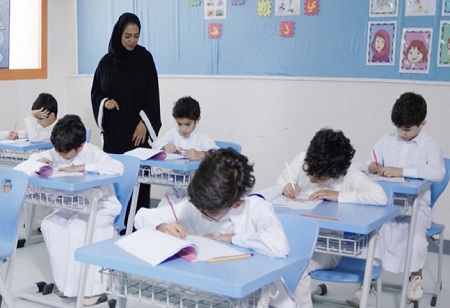Saudi Arabia is expected to remain the largest education market in GCC, growing at a CAGR of 1.6 percent. The total number of students in the GCC is projected to reach 14.2 million by 2027, an addition of 1.1 million from the current level, K-12 enrolments in the region are expected to grow at a CAGR of 1.5 percent to reach 11.7 million by 2027. The UAE-based investment banking advisory firm launched its latest GCC Education Industry. which features forecasts on the sector, growth drivers and challenges facing the segment. It also profiles some of the renowned education companies in the region. The GCC education sector has advanced significantly over the past few years with governments focus on diversifying their economies and enhancing the quality of education. It has also witnessed significant technological investments, especially post-Covid to establish avenues of uninterrupted learning.
This accompanied by rising population, high disposable incomes and increasing private sector participation is expected to drive enrolments in the region, the focus on creating blended learning platforms has created multiple opportunities for EdTech service providers to expand their presence which has led to a rise in investments in the sector. However, eroding profit margins, shortage of skilled staff and intensifying competition are some of the challenges impeding growth of the sector. Additionally, the rise in demand for affordable schooling and the need to build digital infrastructure to remain competitive will also present interesting opportunities across the region, the growing school-age population, high per capita income, sizeable budgetary allocations and favourable government initiatives are expected to drive future growth of the sector. The growing adoption of technology and ramping up of investments in digitally aided platforms will help boost the quality of education across the GCC.
Saudi Arabia is expected to remain the largest education market in the GCC growing at a CAGR of 1.6 percent. In terms of annualised growth, the number of students in Kuwait and UAE are projected to grow at a faster rate than the other member nations between 2022 and 2027. The demand for schools in the GCC is likely to increase at a CAGR of 0.7 percent translating to an addition of an estimated 1,127 schools by 2027 to reach 35,208. While the demand for public schools is expected to increase at a CAGR of 0.4 percent between 2022 and 2027, the number of private schools is anticipated to grow at a faster rate of 1.5 percent. The number of students in private schools is projected to grow at a CAGR of 1.7 percent, whereas enrolments at public schools is likely to increase at a marginally slower pace, recording a CAGR of 1.5 percent between 2022 and 2027.

